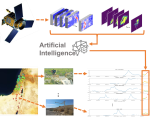Health effects of atmospheric particulate matter
Exposure to air pollution can affect even the most healthy people. Long-term exposure can lead to chronic deseases and premature deaths. The goal of our research is to reach an in-depth mechanistic understanding of how atmospheric particulate matter affect human health through controlled laboratory exposure experiments.


